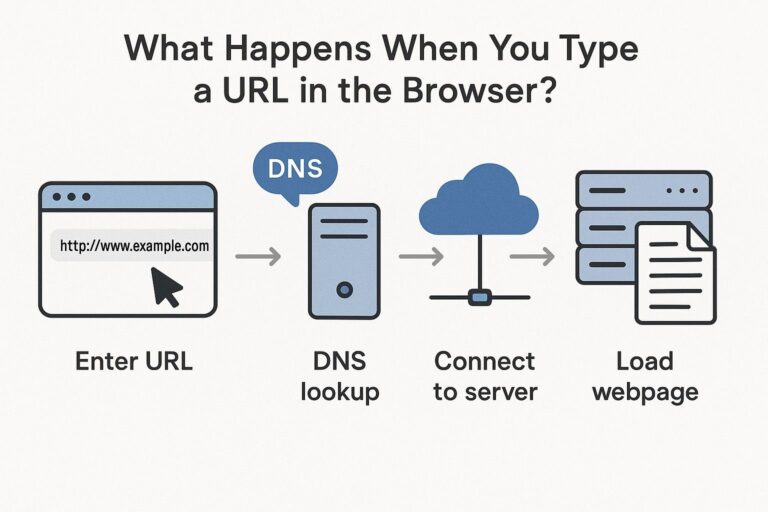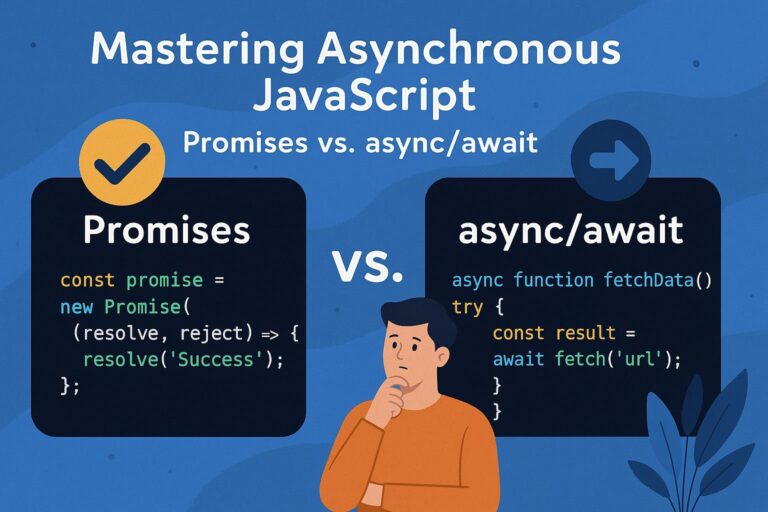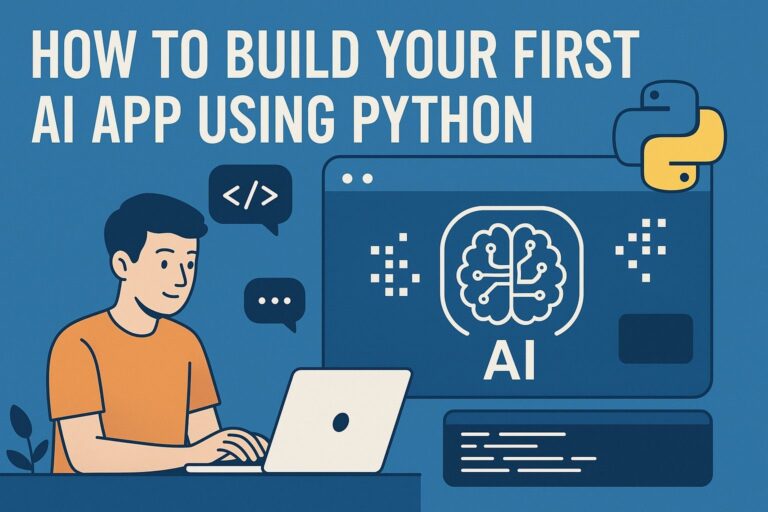
Artificial Intelligence (AI) is transforming nearly every industry—healthcare, finance, education, entertainment, and beyond. It combines elements of computer science, mathematics, statistics, data science, and domain-specific knowledge. This roadmap will guide you through the journey of learning AI from foundational concepts to real-world deployment, step-by-step.
1. Understand the Basics of AI
Before diving into technical implementations, build a conceptual understanding of what AI is and how it fits into the broader technology landscape.
Key Concepts to Learn:
- Definition and history of AI
- Types of AI: Narrow AI (weak AI), General AI (strong AI), Super AI
- Categories of AI tasks: Perception, Reasoning, Learning, Planning, Action
- Subfields of AI: Machine Learning, Deep Learning, Natural Language Processing (NLP), Computer Vision, Robotics, Expert Systems, Knowledge Representation
- Use cases in industries: Healthcare (disease diagnosis), Finance (fraud detection), Retail (recommendation systems), Transportation (autonomous vehicles)
Recommended Resources:
- Book: Artificial Intelligence: A Modern Approach by Stuart Russell and Peter Norvig
- Online course: “AI for Everyone” by Andrew Ng (Coursera)
- YouTube: CrashCourse AI, MIT OpenCourseWare’s “Introduction to Deep Learning”
- Research papers: Search seminal papers on Google Scholar or arXiv
2. Learn the Required Math Fundamentals
Mathematics is essential for understanding how AI models work under the hood. While not all AI practitioners need to master every area of math, a solid understanding of the following topics is crucial:
Linear Algebra:
- Vectors and matrices
- Matrix multiplication and dot product
- Eigenvalues and eigenvectors
- Singular Value Decomposition (SVD)
Calculus:
- Functions and limits
- Derivatives and gradients
- Partial derivatives and chain rule
- Optimization using gradient descent
Probability and Statistics:
- Descriptive statistics (mean, median, variance, standard deviation)
- Probability distributions (Normal, Bernoulli, Binomial)
- Bayes’ theorem and conditional probability
- Hypothesis testing and confidence intervals
Discrete Mathematics (for reasoning and logic):
- Graph theory
- Logic gates and propositional logic
- Set theory and combinatorics
Recommended Resources:
- Khan Academy (math fundamentals)
- 3Blue1Brown YouTube series (especially Linear Algebra and Calculus)
- StatQuest with Josh Starmer (for statistical concepts and visual explanations)
- MIT OpenCourseWare – Linear Algebra and Calculus
3. Learn a Programming Language (Preferably Python)
Python is the most widely used programming language in AI due to its simplicity and vast collection of scientific libraries.
Core Programming Skills:
- Variables, data types, conditionals, loops
- Functions and scope
- Exception handling
- File I/O (reading/writing files)
- Modules and packages
- Object-Oriented Programming (OOP)
Essential Python Libraries for AI:
- NumPy – For numerical computations
- Pandas – For data manipulation and analysis
- Matplotlib/Seaborn – For data visualization
- Scikit-learn – For classical machine learning
- TensorFlow / PyTorch – For deep learning
Recommended Resources:
- “Python for Everybody” by Dr. Charles Severance (Coursera)
- “Automate the Boring Stuff with Python” by Al Sweigart (Book and online site)
- freeCodeCamp and Codecademy Python tracks
- LeetCode and HackerRank for coding practice
4. Learn Data Handling and Preprocessing
Data is the most important part of any AI system. Learn how to clean, prepare, and manipulate data effectively.
Topics to Master:
- Types of data: numerical, categorical, textual, image-based
- Handling missing or null values
- Encoding categorical variables (label encoding, one-hot encoding)
- Feature scaling (normalization, standardization)
- Feature extraction and selection
- Outlier detection and data smoothing
- Train-validation-test splits
- Data augmentation (for images and text)
Tools:
- Pandas for structured datasets (CSV, Excel, JSON)
- NumPy for numerical arrays
- Scikit-learn for preprocessing tools
- OpenCV for image preprocessing
- NLTK / SpaCy for text preprocessing
5. Start with Machine Learning
Machine Learning is the foundation of most AI systems. It enables computers to learn patterns and make decisions without being explicitly programmed.
Types of Learning:
- Supervised Learning – Labeled data (e.g., classification, regression)
- Unsupervised Learning – Unlabeled data (e.g., clustering, dimensionality reduction)
- Semi-supervised and Self-supervised Learning
- Reinforcement Learning – Learning via interaction with an environment
Important Algorithms:
- Linear Regression, Logistic Regression
- Decision Trees and Random Forests
- k-Nearest Neighbors (k-NN)
- Naive Bayes Classifier
- Support Vector Machines (SVM)
- Principal Component Analysis (PCA)
- K-Means Clustering
Model Evaluation Metrics:
- Confusion Matrix, Accuracy, Precision, Recall, F1-Score
- ROC-AUC, Log Loss
- RMSE, MAE, R-squared for regression
Tools:
- Scikit-learn for ML models and metrics
- Google Colab or Jupyter Notebook for experimentation
- Kaggle for practice datasets and competitions
6. Learn Deep Learning
Deep Learning focuses on training artificial neural networks with multiple layers, making it highly effective for tasks involving large and unstructured datasets.
Fundamental Concepts:
- Neurons, Layers, and Weights
- Forward Propagation and Backpropagation
- Activation Functions (ReLU, Sigmoid, Tanh)
- Loss Functions (Cross-Entropy, MSE)
- Optimizers (SGD, Adam)
Deep Learning Architectures:
- Feedforward Neural Networks (FNN)
- Convolutional Neural Networks (CNNs) – for images
- Recurrent Neural Networks (RNNs), LSTM, GRU – for sequences and time series
- Autoencoders – for unsupervised learning and feature extraction
- GANs (Generative Adversarial Networks)
Tools and Frameworks:
- TensorFlow and Keras
- PyTorch (widely used in research)
- OpenCV for image processing
- Hugging Face Transformers for NLP models
Recommended Learning Paths:
- Deep Learning Specialization by Andrew Ng (Coursera)
- Practical Deep Learning for Coders by fast.ai
7. Explore Specialized AI Fields
After mastering the foundations, specialize in applied areas based on your interests and career goals.
Natural Language Processing (NLP):
- Text preprocessing: Tokenization, Stemming, Lemmatization
- Bag of Words, TF-IDF
- Word Embeddings: Word2Vec, GloVe, FastText
- Transformers, BERT, GPT, T5
- Applications: Sentiment Analysis, Chatbots, Question Answering
Computer Vision:
- Image classification and object detection
- Image segmentation and edge detection
- Facial recognition and OCR
- Tools: OpenCV, YOLO, EfficientNet
Reinforcement Learning:
- Markov Decision Processes (MDP)
- Q-Learning, SARSA
- Deep Q-Networks (DQN)
- Applications: Game-playing agents, Robotics, Autonomous navigation
8. Work on Real Projects
Project-based learning bridges the gap between theory and practice.
Suggested Projects:
- Email spam filter
- Movie or music recommendation system
- Object detection in images
- AI-powered chatbot
- Stock price prediction using time series
- Fake news detection using NLP
- Pneumonia detection using chest X-ray images
Best Practices:
- Start with small datasets, then scale up
- Use Jupyter or Colab notebooks for experimentation
- Write modular and reusable code
- Use version control (Git and GitHub)
- Document your projects with READMEs and visual outputs
- Build a portfolio website or blog to showcase your work
9. Learn Model Deployment and MLOps
Once your models are trained, make them available for real-world use through deployment and automation.
Topics to Explore:
- Model saving:
joblib,pickle,ONNX - Building REST APIs using Flask or FastAPI
- Creating web interfaces using Streamlit or Gradio
- Docker and containerization
- Model versioning and reproducibility
- CI/CD pipelines for ML
- MLOps tools: MLflow, DVC, Kubeflow
10. Stay Updated and Keep Practicing
AI is a dynamic and fast-evolving field. Keep learning, building, and collaborating.
Continuous Learning Strategies:
- Subscribe to AI newsletters (e.g., The Batch by deeplearning.ai)
- Follow research papers on arXiv, Google Scholar
- Read blogs from OpenAI, DeepMind, Hugging Face
- Participate in AI communities (Reddit: r/MachineLearning, r/learnmachinelearning)
- Compete in Kaggle competitions
- Attend online conferences and workshops (NeurIPS, ICML, CVPR)
Final Thoughts
Learning AI from scratch is an intensive yet rewarding journey. Start with foundational concepts, master data and algorithms, build real-world projects, and gradually move into advanced topics and deployment. Focus on solving real problems and contributing to open-source or research communities when possible.
Stay consistent, build curiosity, and don’t fear complexity—break down problems, practice regularly, and keep building.

I’m Shreyash Mhashilkar, an IT professional who loves building user-friendly, scalable digital solutions. Outside of coding, I enjoy researching new places, learning about different cultures, and exploring how technology shapes the way we live and travel. I share my experiences and discoveries to help others explore new places, cultures, and ideas with curiosity and enthusiasm.






